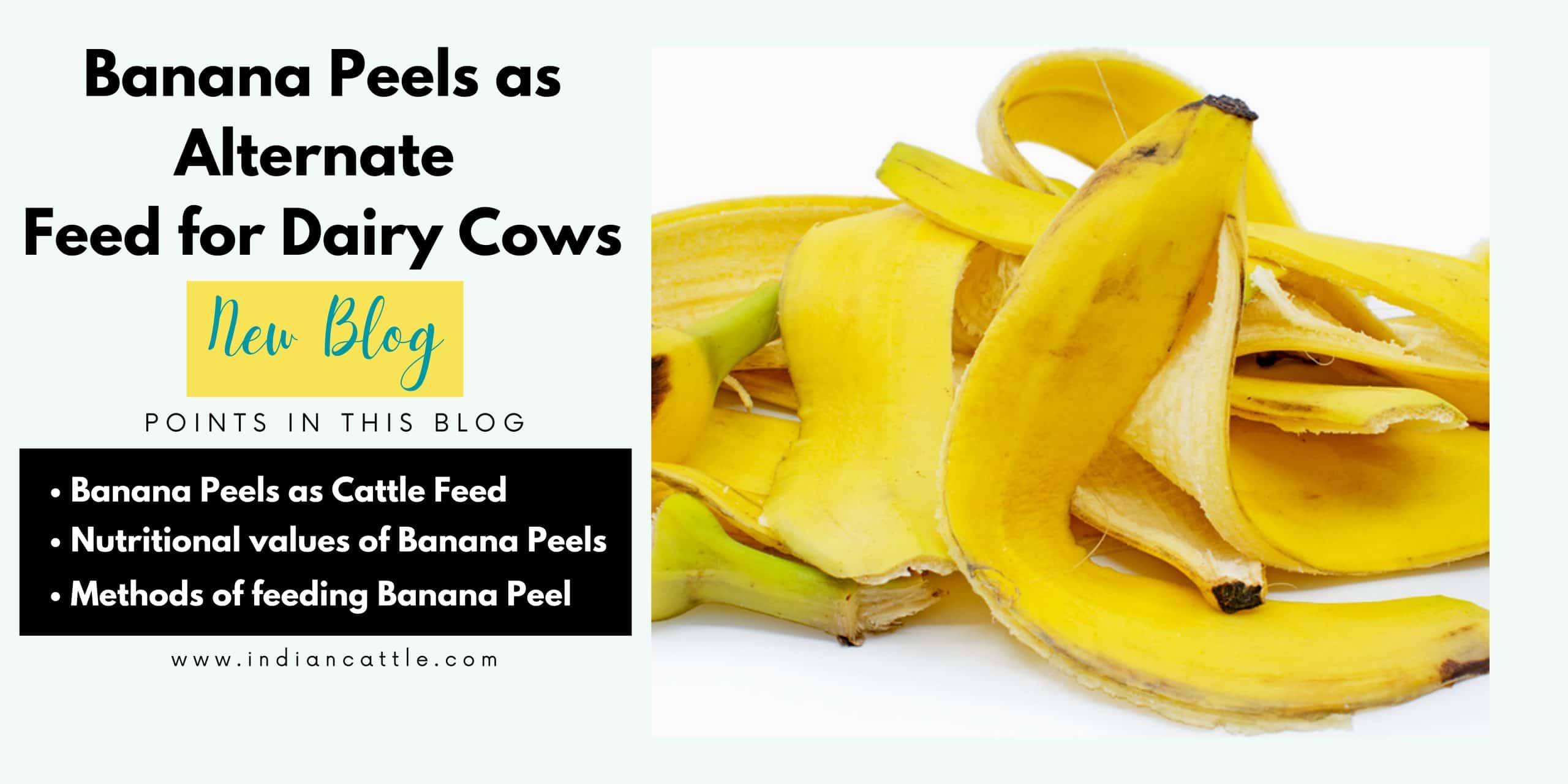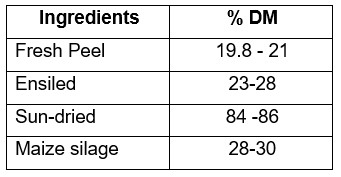
Banana Peels as Alternate Feed for Dairy Cows
Banana Peels as Cattle Feed
Banana, a poor man’s fruit, is an important cash crop worldwide. In 2017, world banana production was 117 million tons. With 30 MT production valued at 830 million US$, India ranks number one. Maharashtra state ranks as the top banana producer in the country followed by Tamil Nadu. As per an estimate 20-35% is wasted due to lower shelf-life and lack of proper storage. Starch extracted from banana has numerous industrial applications, such as, in baby food, textile, pharma products. In India banana wafers, ‘bhujia’ are becoming popular leading to many industrial units using raw/green or ripe banana. Although the pulp is consumed or processed. In several African countries, people eat cooked peels, but in India and other countries, peels are discarded as waste. In this blog, I have addressed the often-asked query, ‘how much banana peels can be safely fed to a cow’. I will also discuss various methods of long-term preservation as a large quantity may be available seasonally.
Numerous reports on the feeding of banana peels to livestock have been published since the 1960s. Chemically, peel constitutes around 80 % water, which means 10 kg will supply only 2 kg nutrients. This is however comparable to maize silage.

Nutritional values of Banana Peels
The above tables describe the nutrition values in banana peels published in www.feedipedia.org. There could be minor variations in local verities and due to the factors, such as stages of harvesting and ripening. Large-volume users should get locally available peels chemically analyzed for various parameters including, starch, soluble sugar, lignin, and saponin. These tests can be ordered from any nutrition analysis laboratory or a nearby veterinary institute. Please refer to the Directory Section of portal www.indiancattle.com for contact details.
| Parameters | Banana Peels | Maize silage |
| Crude Protein | 8.2-8.5 | 7.2 -8 |
| Crude Fibre | 10-12 | 21.4 – 25 |
| NDF | 47-49 | 46 – 48 |
| ADF | 29-32 | 24.6 – 27 |
| Ether Extract | 6.25 | 2.5 – 3.0 |
| Lignin | 10-11 | 2.9 |
| Soluble sugar | 12-13 | 0.00 |
| Minerals | 12-13 | 3.7-4.0 |
| ME | 9.5 MJ | 10.8 |
I have also compared nutritive values of peels with silage in the same table to prove that these could replace fodder or silage in cattle feed. Similar to silage or maize fodder, banana peels are low in protein (around 8%). Hence if peels are a major part of diet then high protein supplements, such as cottonseed cake, chuni should be added. Since lignin, saponin, oxalate, and trace minerals contents are high, cows should never be fed totally on banana peels. A common recommendation is to replace up to 50% of maize/sorghum silage (or green fodder on a DM basis). For example, A cow currently on 30 kg Napier or maize silage or green maize/sorghum fodder (DM 10.5 kg) be fed up to 25 kg peels (5.25 kg on DM basis) and 15 kg silage (5.25 kg DM).
Methods of feeding Banana Peel
The availability of peels from industries may be in large volume but periodic. Sun-drying is a very cost-effective option in a tropical climate. The advantages of powder are long shelf-life and ease of mixing with silage or concentrate feed. Animals relish the powder compared to fresh peels. In case large quantity and rapid drying are desired solar driers are another option.

Another preservation method is anaerobic fermentation or ensiling. The process is similar to the one followed for maize/sorghum or Napier silage. For proper chaffing of peels into the right size is important. For this run mixture of fodder and peels in the chaff cutter. Preparing mixed banana and maize silage by adding both in equal proportion is preferred. Peels contain around 13 % soluble carbohydrate hence with late-harvested fodder fermentation will be optimum. Even in mixed silage pH is important to prevent spoilage. Banana peels for silage can also be mixed with low sugar containing sugarcane tops or leafy vegetables.
In summary, banana peels can be fed as per the recommendations described in the feeding standard table. Be advised, these are maximum limits and it is always wise to feed less than prescribed. In the case of lactating animals especially, the offered peel-mixed feed should be properly balanced for protein, energy, and NDF. If these instructions are followed, feeding processed peels would be an economical option for landless and small-hold farmers.
(Please also read a blog on the feeding of banana leaves to cows by the same author)
Please also read the blog on the Feeding of Banana Leaves to Cows by the same author.
Dr. Abdul Samad
Dairy Consultant
